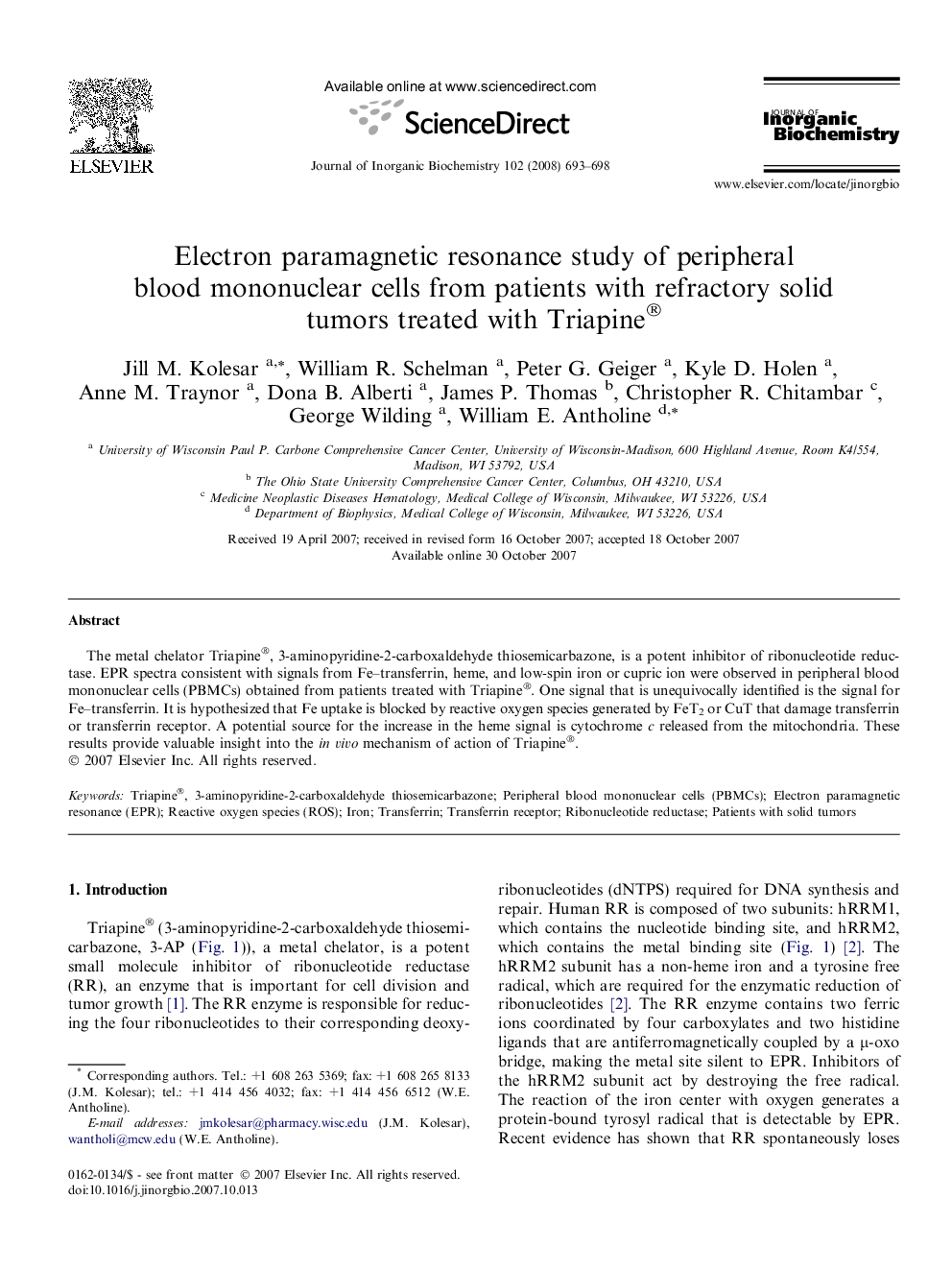| Article ID | Journal | Published Year | Pages | File Type |
|---|---|---|---|---|
| 1316935 | Journal of Inorganic Biochemistry | 2008 | 6 Pages |
The metal chelator Triapine®, 3-aminopyridine-2-carboxaldehyde thiosemicarbazone, is a potent inhibitor of ribonucleotide reductase. EPR spectra consistent with signals from Fe–transferrin, heme, and low-spin iron or cupric ion were observed in peripheral blood mononuclear cells (PBMCs) obtained from patients treated with Triapine®. One signal that is unequivocally identified is the signal for Fe–transferrin. It is hypothesized that Fe uptake is blocked by reactive oxygen species generated by FeT2 or CuT that damage transferrin or transferrin receptor. A potential source for the increase in the heme signal is cytochrome c released from the mitochondria. These results provide valuable insight into the in vivo mechanism of action of Triapine®.
